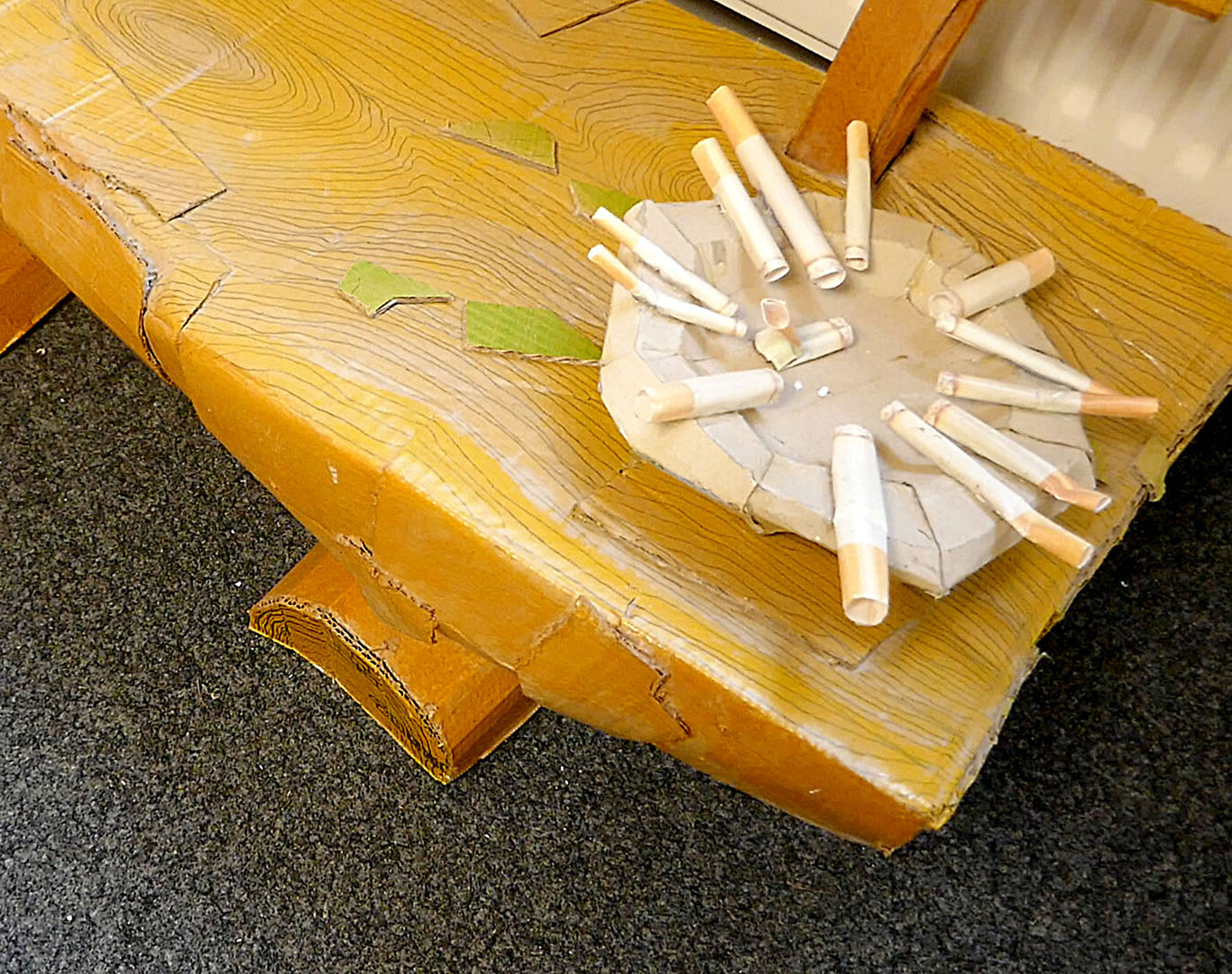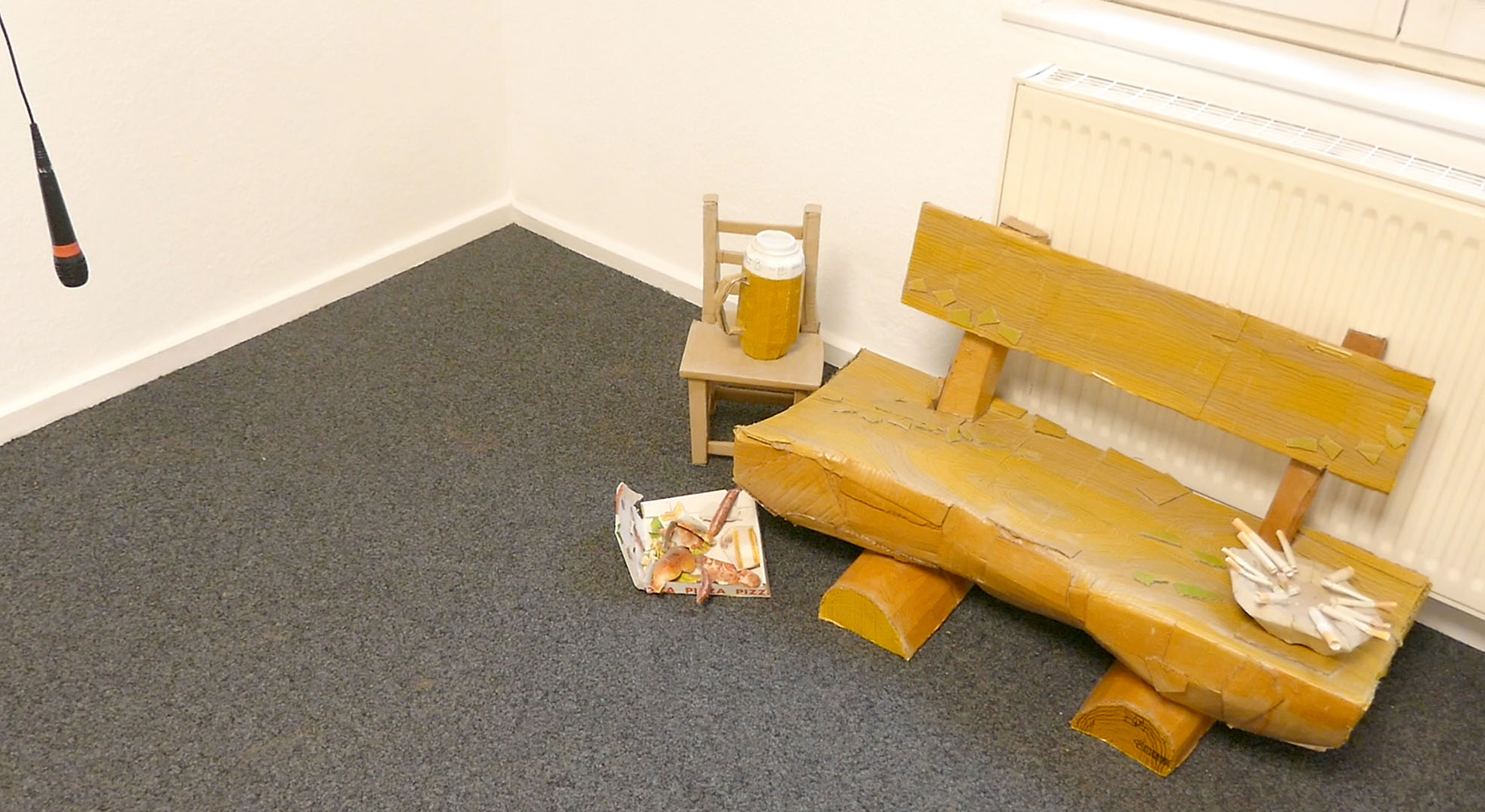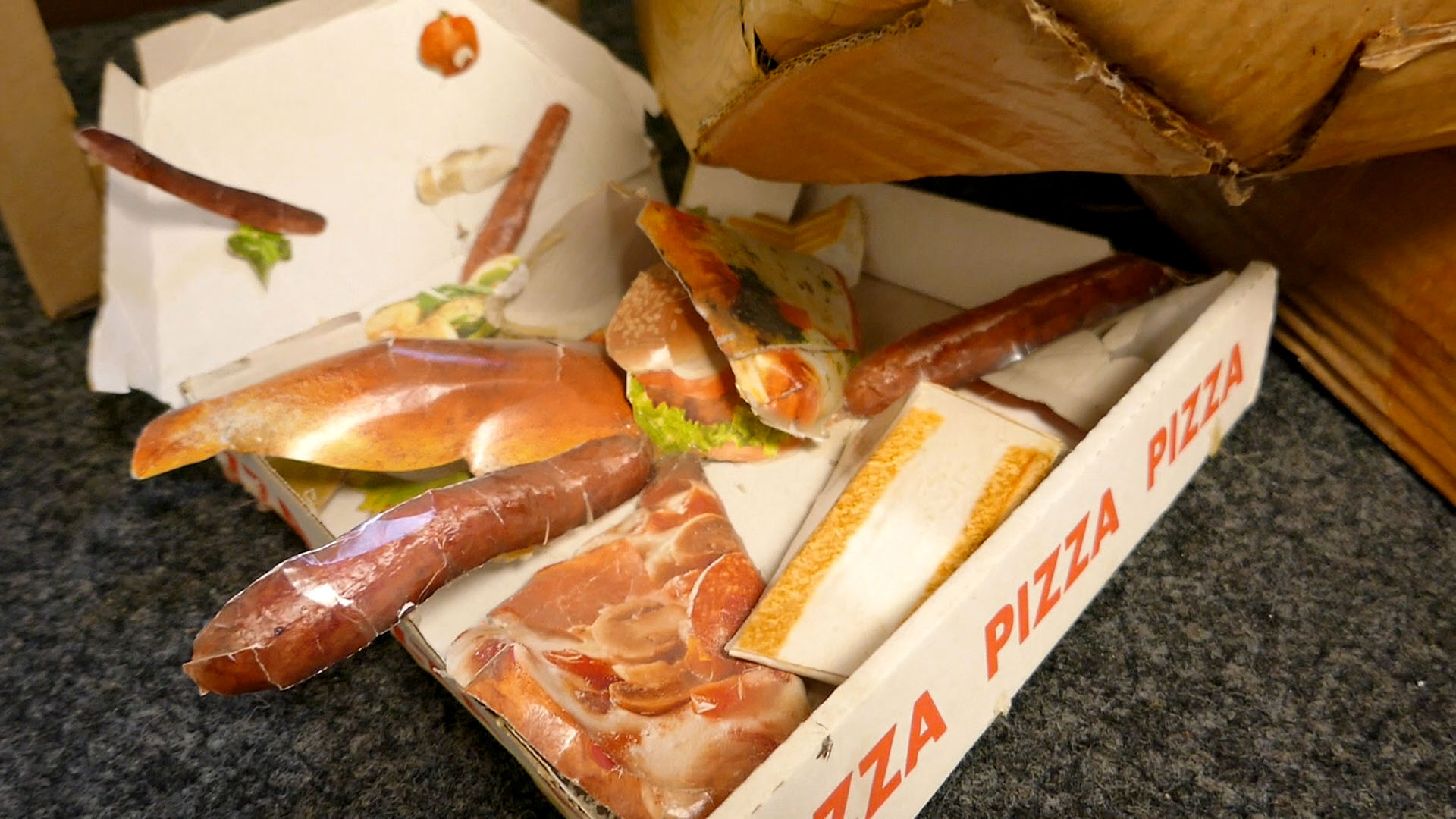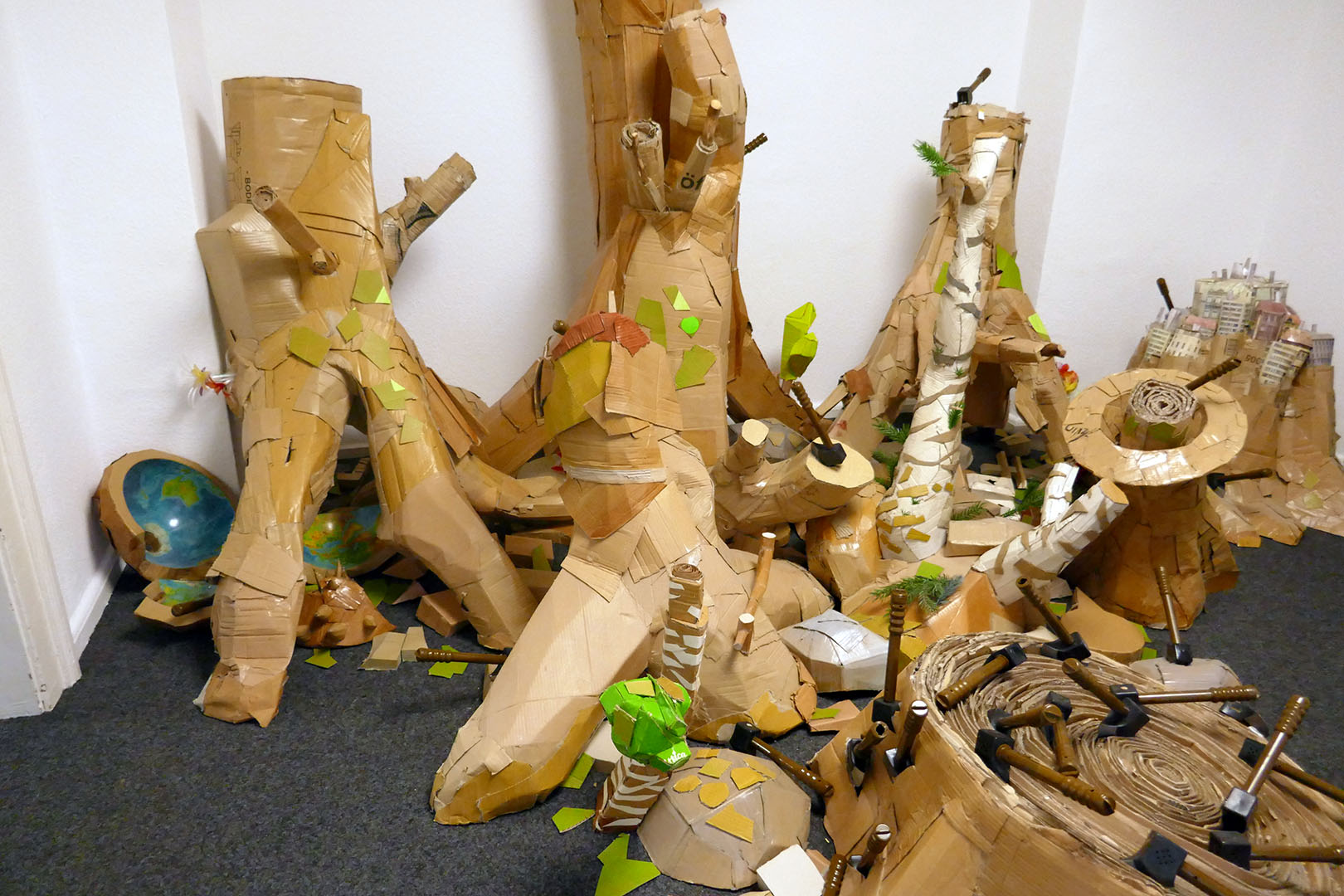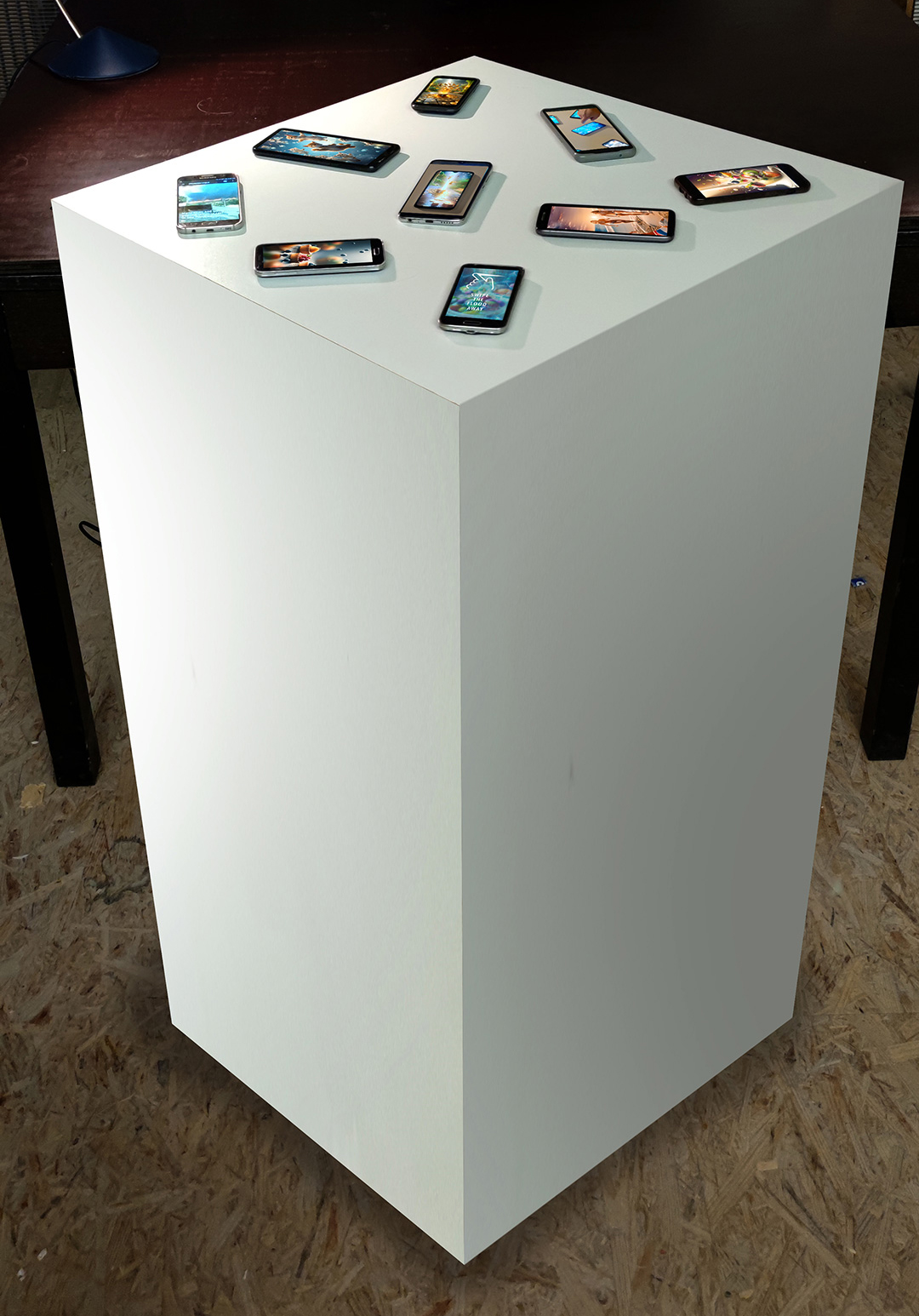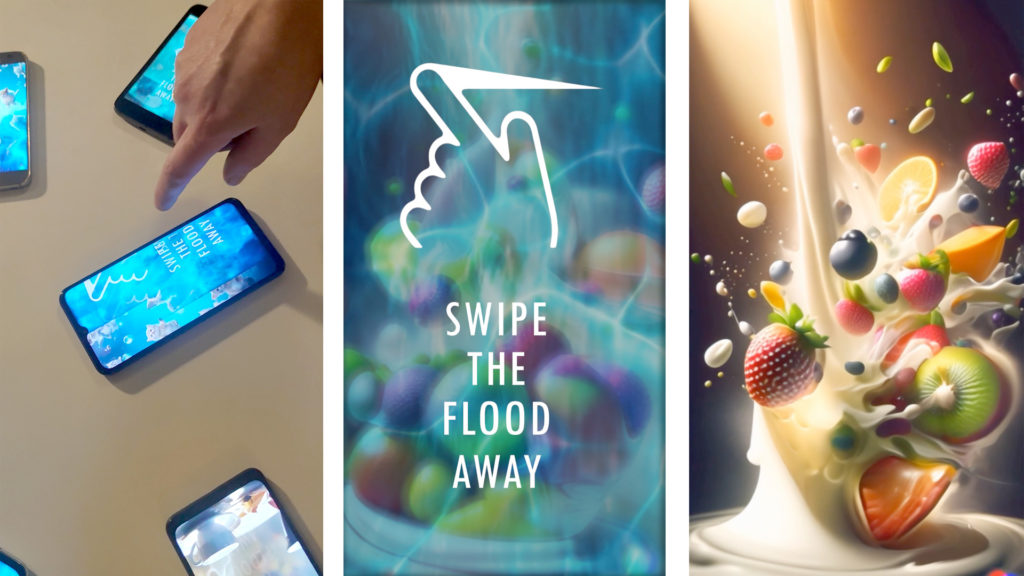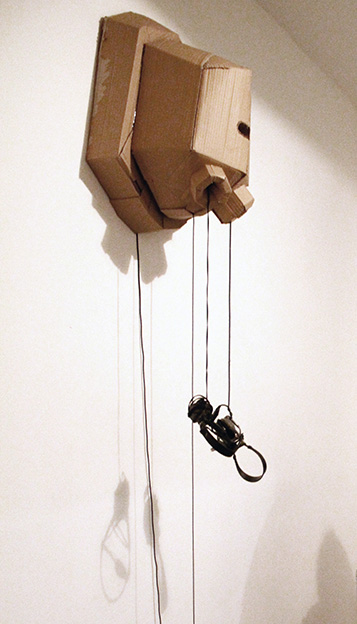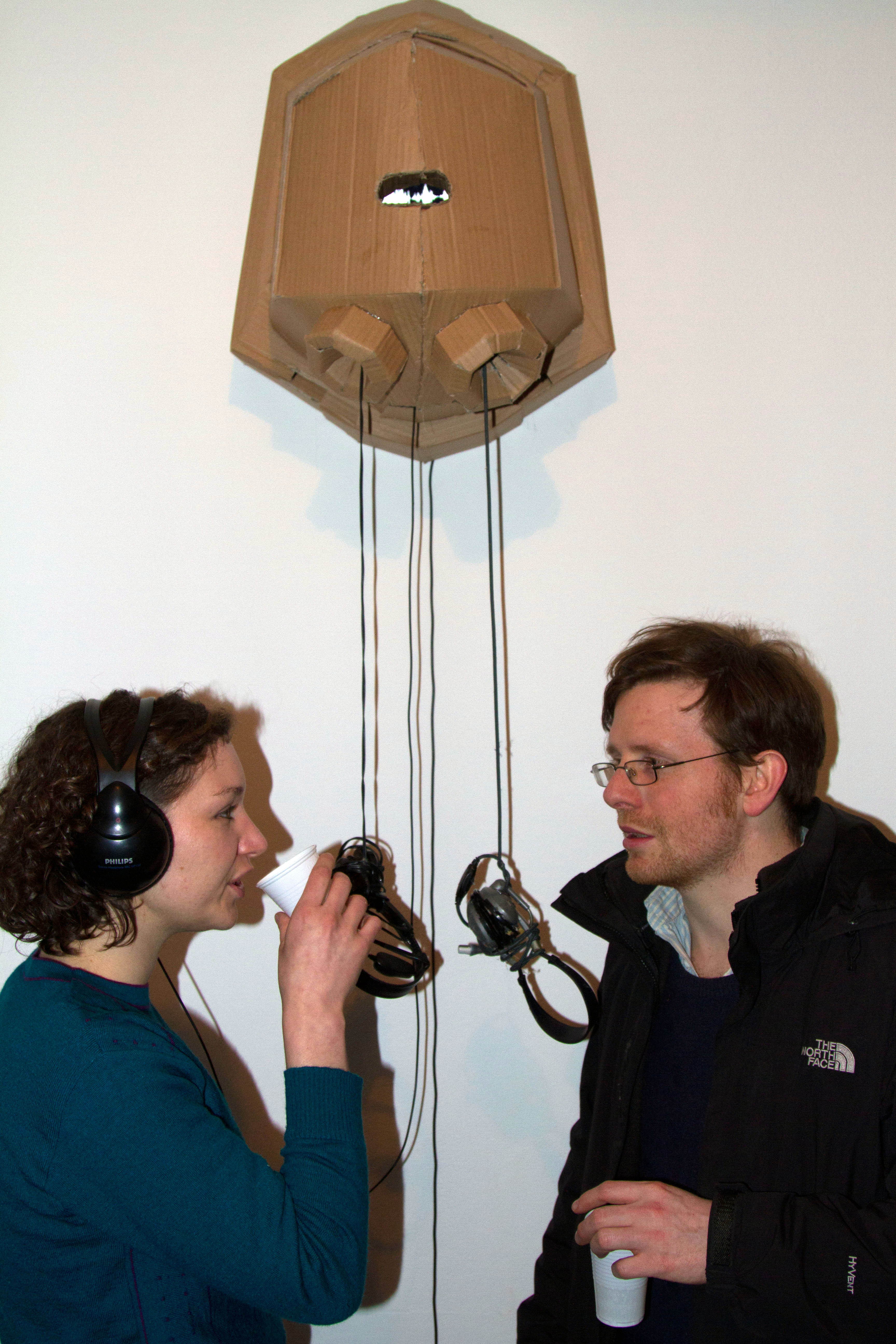Room installation | cardboard, paint, hot glue | 6 x 8 x 3 m
Swipe The Flood Away
Tobias Bilgeri and Jens Isensee, 2024 | Interactive Video Installation
This interactive installation runs synchronously on 9 smartphones. The devices are fixed in a grid on a pedestal and a harmonious, virtual delirium initially plays out on their screens. The player can drift off into various AI-generated worlds and truths. However, this harmony is soon shattered by suddenly popping up disaster scenarios. Cell phone videos of devastating floods, such as those that have become rampant in the wake of the climate catastrophe in recent years, flood the screens like Instagram stories. Initially sporadically and then increasingly frequently, the ideal digital world is confronted with a harsh and brutal reality. In a way, AI simulations and disaster videos have the same hypnotic attraction. No wonder, since the field of tension between environmental dystopianism and AI tech utopianism is a field that is cultivated and harvested by the attention extractivism industry.
Paradoxically, the only action left to the player in these events is to swipe the disaster stories off the screen, as is familiar from social media apps. The hermetic game loop intensifies until the events flood all channels like a torrent. Here, the installation concept addresses how human consciousness tends to repress itself when overwhelmed by the complexity of the global situation, instead of moving into action. The escapist nature of media production and a belief in technology and progress that is as tempting as it is fatal are critically juxtaposed in the form of these lucid AI dreams. The simulation comes full circle when the question of the inevitability of this end finally appears on the screen and a new beginning is offered via swipe.

New photos of Overgrowth
Interactive spacial video installation | Motion sensor, PC, short distance projector,
3D-software | 2.7 × 1.8 × 4 m | 2018
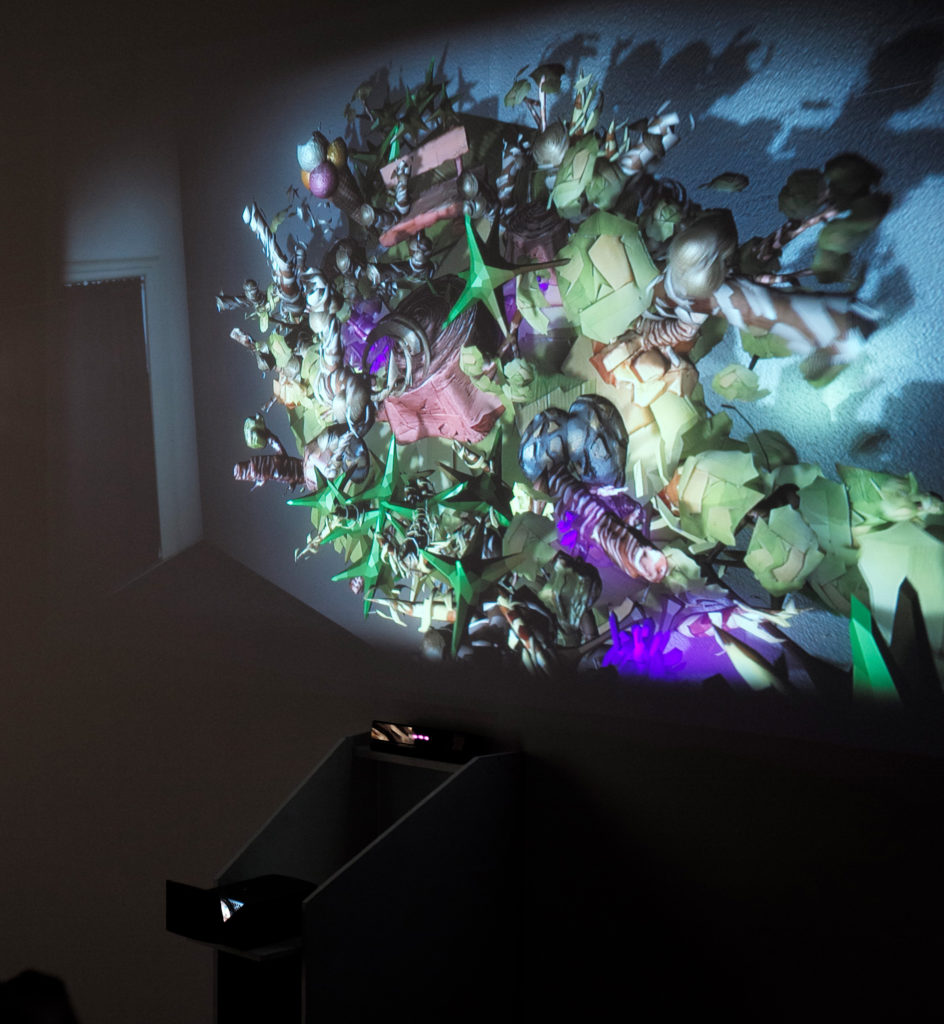

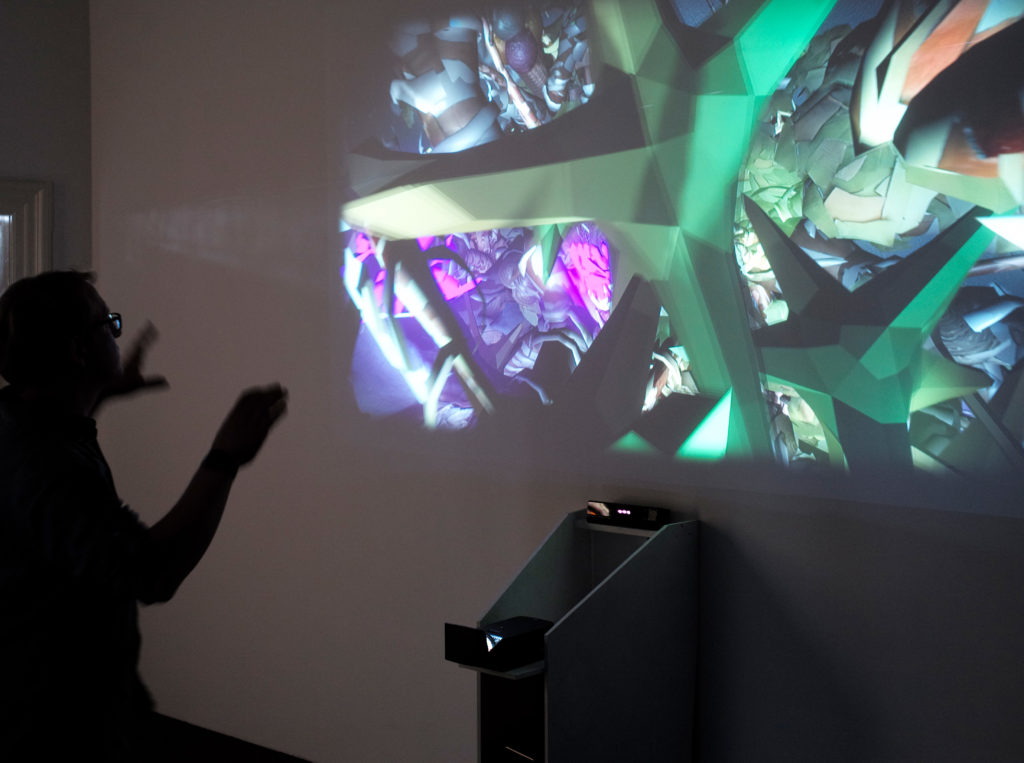
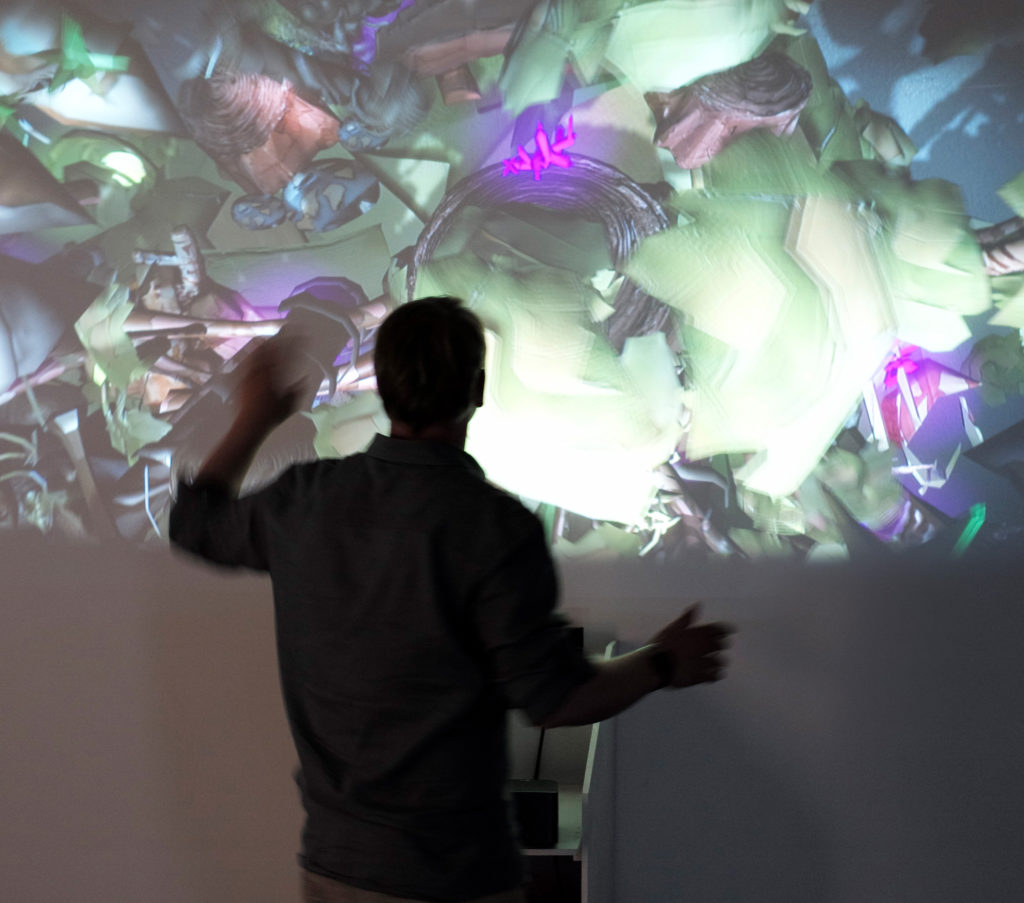

I just rediscovered photos from our group show Surviving the Fitness made made by Chris Becher. Thanks to him I got a bit of documentation from that exhibition in Kunstverein Wolfenbüttel. You’ll find more information about this interactive installation right here.
Subtile Surveillance
Cardboard, lacquer hot glue, Responsive camera
dummy | 0.3 × 0.4 × 0.4 m | 2019
An installation in my solo show the „Meta“ im Kunsthaus Braunschweig. Here’s also a video with an interview with the local press.

Reality Glasses
Experimental Short Film and Video Installation | carton, acrylic, hardware
0,6 × 0,7 × 0,5 m | 6:59 minutes | HD | 2022
Reality Glasses is an essayistic short film about how humans created their own realities ever since. In the installation version it can be viewed only on a specially constructed headset made of cardboard and acrylic lacquer with hardware components.
| Read more…Virtual Materialism
Interactive spacial video installation | Motion sensor, PC,
short distance projector, 3D-software | 2.7 × 1.8 × 4 m | 2019
In this interactive video installation up to 4 recipients are confronted with a virtual recreation of themselves out of objects and stuff. In a way they are becoming interactive ready-mades. The masks on the figures in the virtual mirror recite an acoustic collage of text fragments from the essay ’The Imaginary‘. It’s an early book by Jean-Paul Sartre which is a phenomenological study of human imagination. In it, Sartre distinguishes between perception and imagination which he identifies as humans ability for creating reality.
The work also has an immersive level. The viewers which are re-embodied out of objects and things, can move around and collect virtual coins that appear out of thin air in the virtual space. They even have to do it to sustain themselves, otherwise someone else wins and rest will disintegrate. This Win-Loose-Loop continues endlessly. The recipients could listen to the speakers, but the temptation to get lost in the spectacle is enormous. Also the exhibition environment is reconstructed in 3D to condense the experience of a reflection in this site-specific installation.
This project is a cooperation Jens Isensee and Rico Possienka. The installation is made with Kinect Sensor and Unity 3D and an ultra short distance projector connected to PC rendering hardware.
| Read more…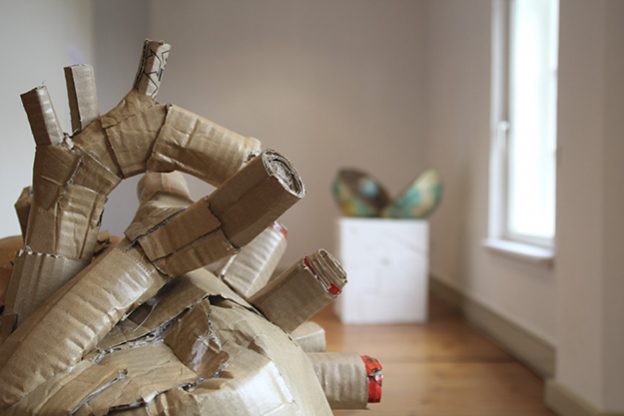
Wheelwork
4-channel video installation | LCD-screens, mini-PC, fans, carton, acrylic
0,8 × 0,7 × 1,3 m | 2016
The Wheelwork is a 4-channel video installation made of cardboard with integrated LCD-screens. Through four apertures in this sculpture its simulated inner workings can be seen, a mechanism made of wooden gears that was filmed in the historic mill ensemble of Heiligenrode.
Overgrowth
Interactive spacial video installation | Motion sensor, PC, short distance projector,
3D-software | 2.7 × 1.8 × 4 m | 2018
Overgrowth is an interactive spacial video installation with integrated motion sensor, PC hardware and a short distance projector. The sensor of this interactive installation detects the viewing angle of a spectator in front of the projection and the 3dimensional scenario is generated and displayed according to the recipients perspective. The viewers hand movements are captured as well and transferred into the virtual space. As light spots they float over the scenario and organic structures are sprouting at the corresponding places on projected wall.
The spectators interactions generate an organic structure which is growing excessively until its complexity reaches the systems rendering limits and the players interactions are shrinking structures again. The result is a vital and diverse play of prosperity and transgression in a closed, self-regulating sphere. The spectator is thus emancipated from his passive role to become the designer of an individual sculpture. After leaving space, the generative structure resets itself, making the sculpture temporary and processual. | Read more…
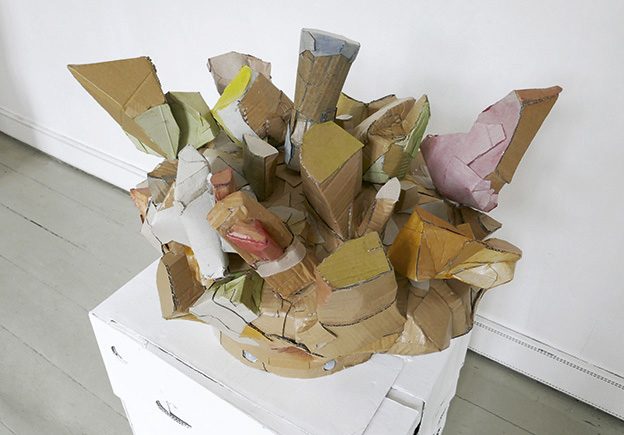
Deformation
Interactive sculpture | Disco ball motors, motion detectors, acrylic, wood, carton
0,7 × 0,9 × 1,3 m | 2016
This Installation detects movements and its extremities begin to deform in opposing rotations. The spectator becomes part of the process. | Read more…
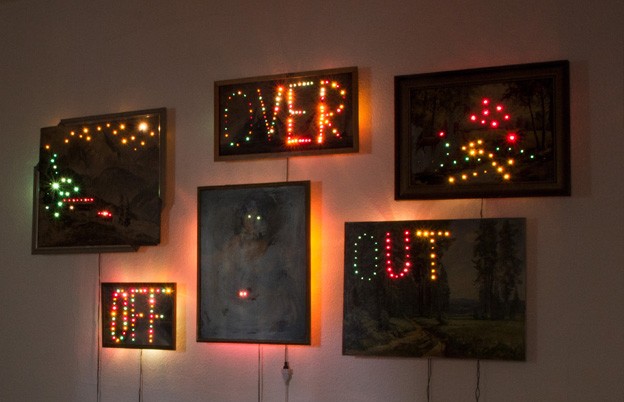
Off, Over and Out
Wood, art prints, light chains, hot glue | 2.4 × 1.6 × 0.3 m | 2015 | Read more…
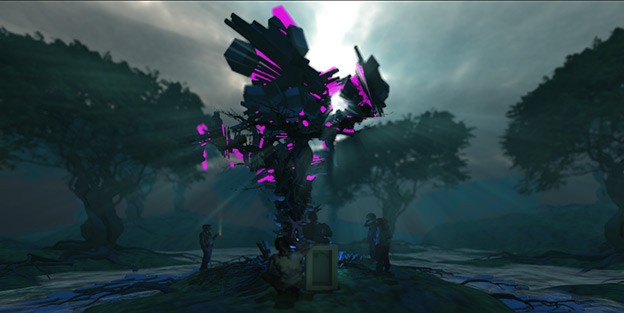
Objective
Interactive video installation | VR, head tracking
0,6 x 0,6 x 2 m | 2015 | Read more…
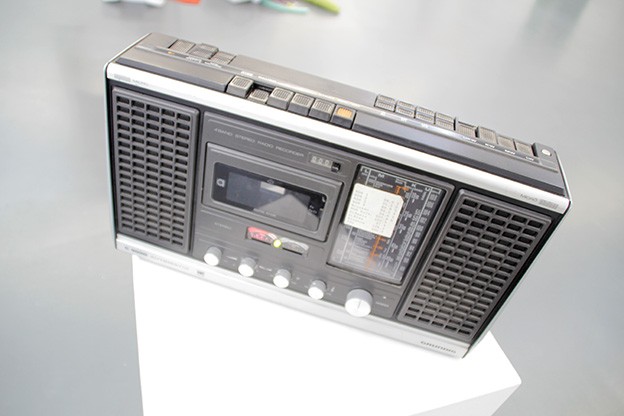
Channels
Modified hardware, Raspberry Pi, Arduino | 0.6 × 0.6 × 1.4 m | 2014 | Read more…
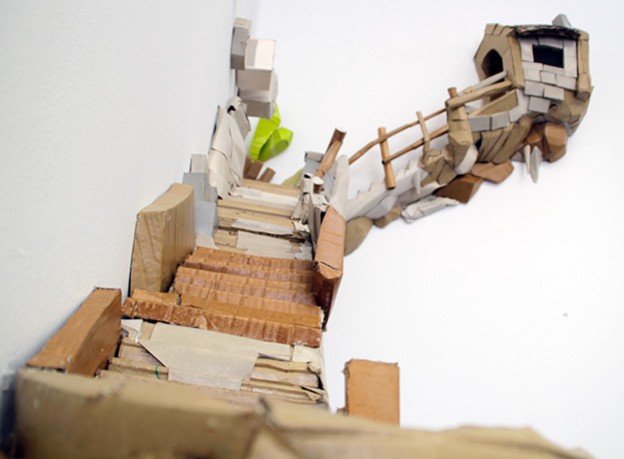
Ascent
cardboard, wood, hotglue, acrylic clear lacquer | 2.8 x 1.5 x 1.2 m | 2014 | Read more…

Procedural Sculptures
Interactive Video Installation | asymetric cam projection | 3 images | 178 words | Read more…
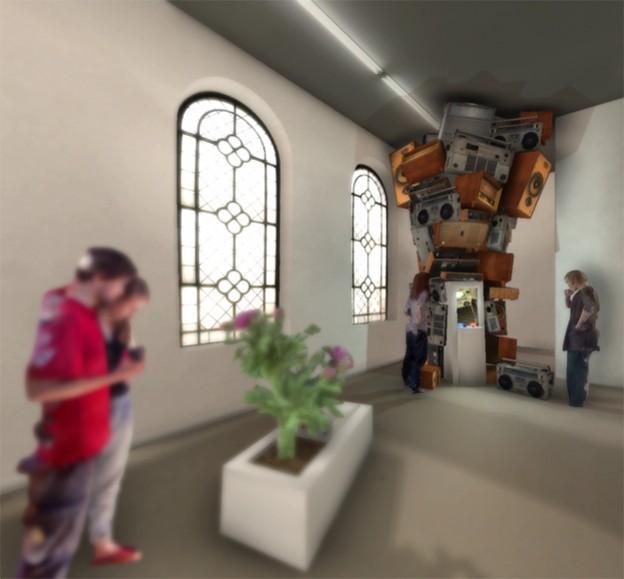
Gegenwartsmühle
‘Mill of Presence’ | Interactive video installation
Video game machine | 0.6 × 0.6 × 2 m | 2014 | Read more…
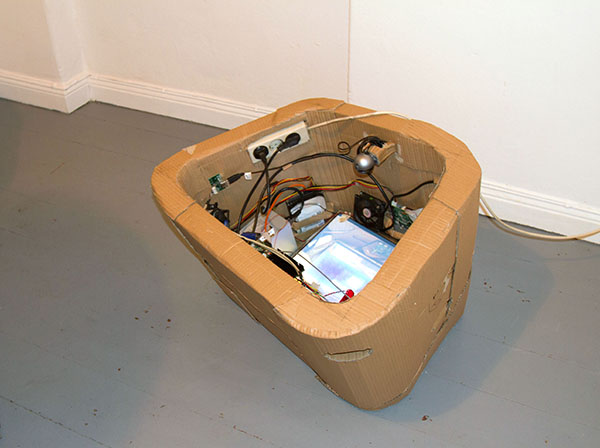
Ego Tunnel
Autonomous computer installation | PC hardware, cardboard | 1.2 × 1 × 0.8 m
The ego tunnel is an autonomous computer installation. An old PC system was dismantled and all components rebuilt into a new constellation. This newly configured system is only able to observe itself (through a webcam) and reproduce the image of itself in endless repetition. In this sense it is redundant and self-contained as though the system is similarly running a film of itself. This might vaguely be reminiscent of Thomas Metzinger, a philosopher involved in neuroscience who, in his book ‘The Ego Tunnel’ describes the human ‘Self’ as a self-illusion vigorously practised by human beings.
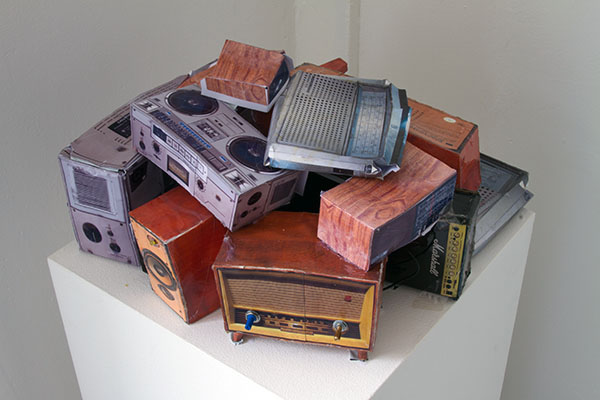
Receivers
Printed cardboard, hardware, hot glue, paint | 0.4 × 0.5 × 0.5 m | 2012 | Read more…
Sonar
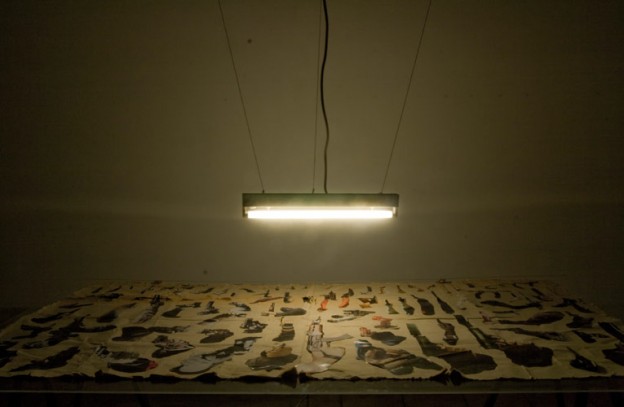
Arsenal
Paper cuttings, historical world maps, acrylic glass panels | 2.4 × 1.2 m | 2011 | Read more…

The Imaginary
Interactive film | Pc, screen, camera sensor | 2 × 2 x 1.5 m | 2011 | Read more…


